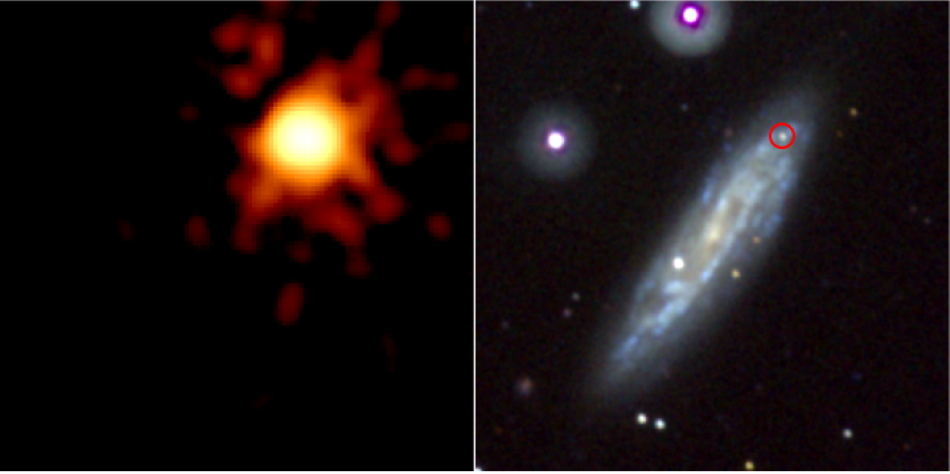
 Credit:NASA; Swift Team; A. Soderberg et al.
Credit:NASA; Swift Team; A. Soderberg et al.
In Memoriam
Seems like we spend a lot of time here ruminating over the corpses of expired stars. How powerful their explosive energies, whether they left behind a black hole or neutron star or just a hot nebula expanding away into nothingness. Star deaths represent some of the most energetic events ever witnessed, some so powerful they could be witnessed halfway across the Universe with nothing more than the unaided eye. But the bright flashes that announce the death of a star occur days after the real collapse that marks the star's demise. It's extremely difficult and unlikely to see this actual event itself. But, spectacularly, such an event was seen by the Swift Gamma-ray hunter. In addition to possessing a gamma-ray telescope, Swift also carries X-ray and UV/optical telescopes as well. While Swift was staring at a distant galaxy called NGC 2770 looking at the X-ray and optical emission from one dead star, another died. For the first time Swift observed both the optical brightening of the star and the intense burst of X-rays which should initially appear when a powerful shock, formed along with the collapse of the stellar core, breaks out of the dying star's surface and totally disrupts the star in a titanic explosion. The image above on the right shows the Swift optical image of the galaxy and the new supernova, called SN 2008D, in the red circle. On the left is the X-ray image which shows the intense X-ray emission produced by the "breakout" of the shock wave through the stellar surface.
<
HEA Dictionary ● Archive
● Search HEAPOW
● Other Languages
● HEAPOW on Facebook
● Download all Images
● Education ● HEAD
>
Each week the HEASARC
brings you new, exciting and beautiful images from X-ray and Gamma ray
astronomy. Check back each week and be sure to check out the HEAPOW archive!
Page Author: Dr. Michael F. Corcoran
Last modified Tuesday, 27-Feb-2024 10:15:21 EST


